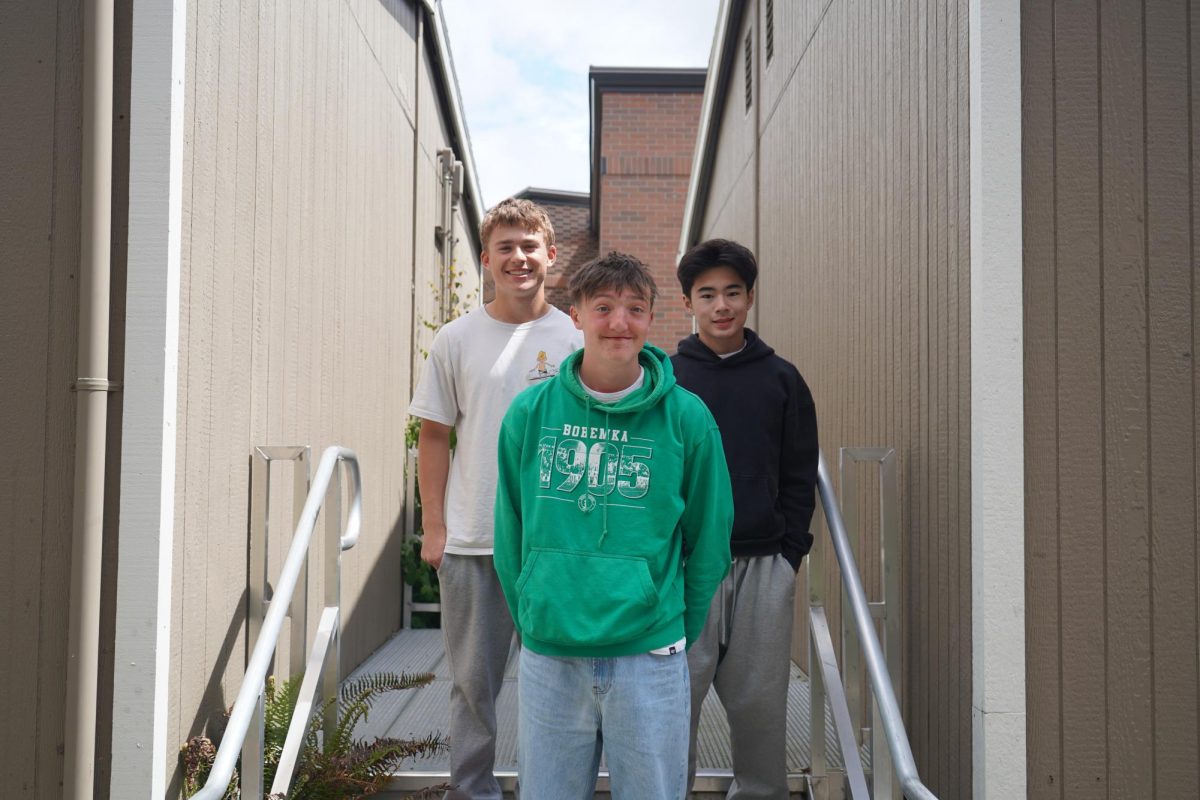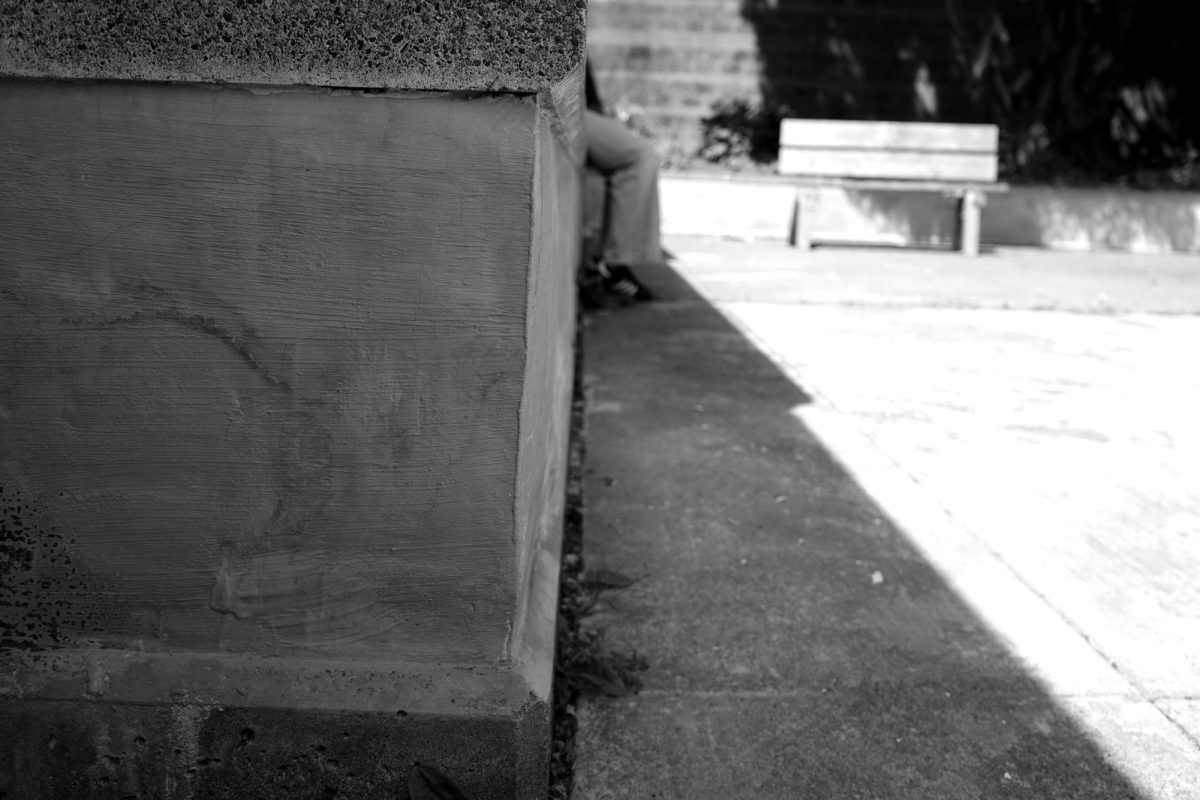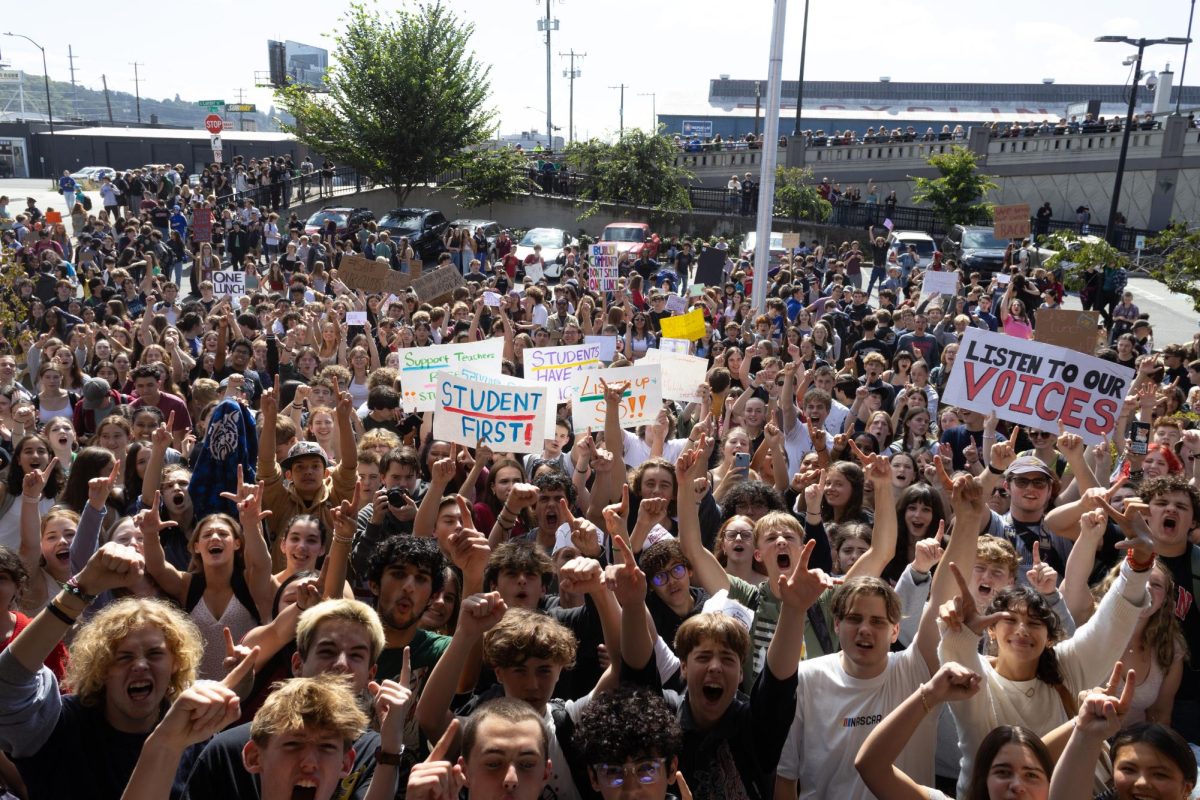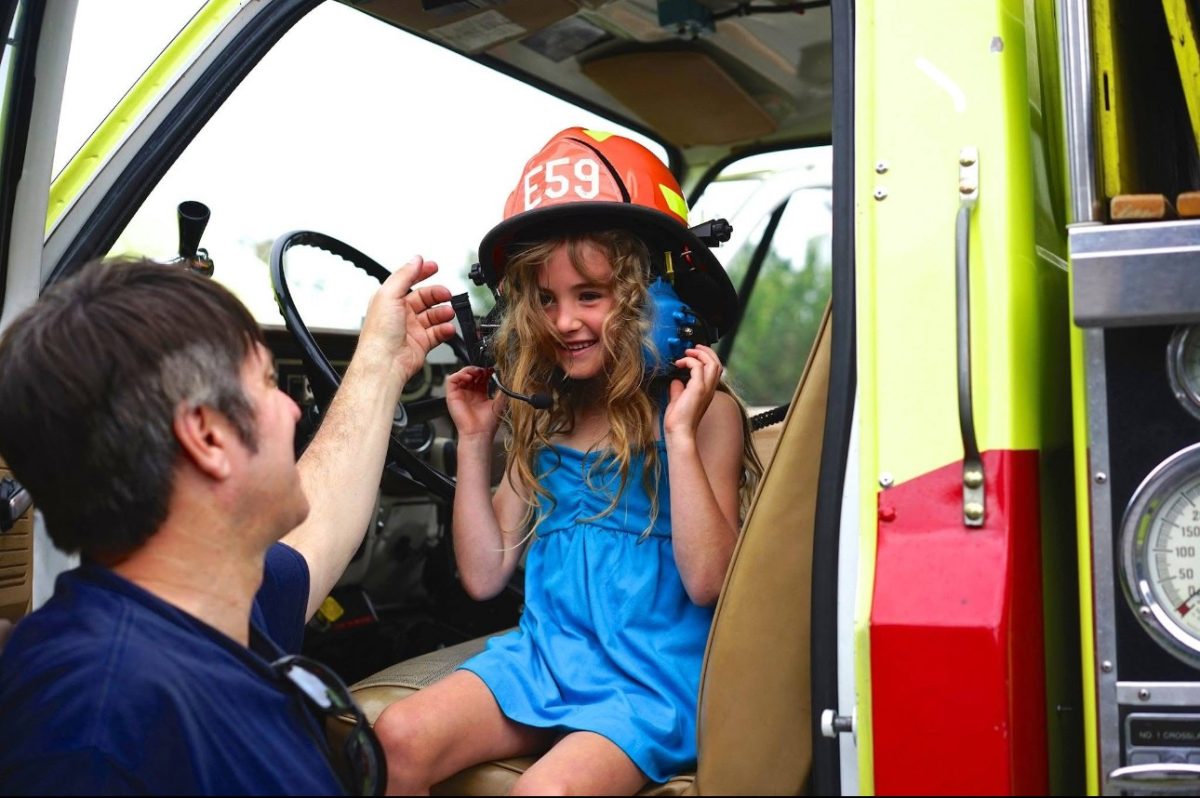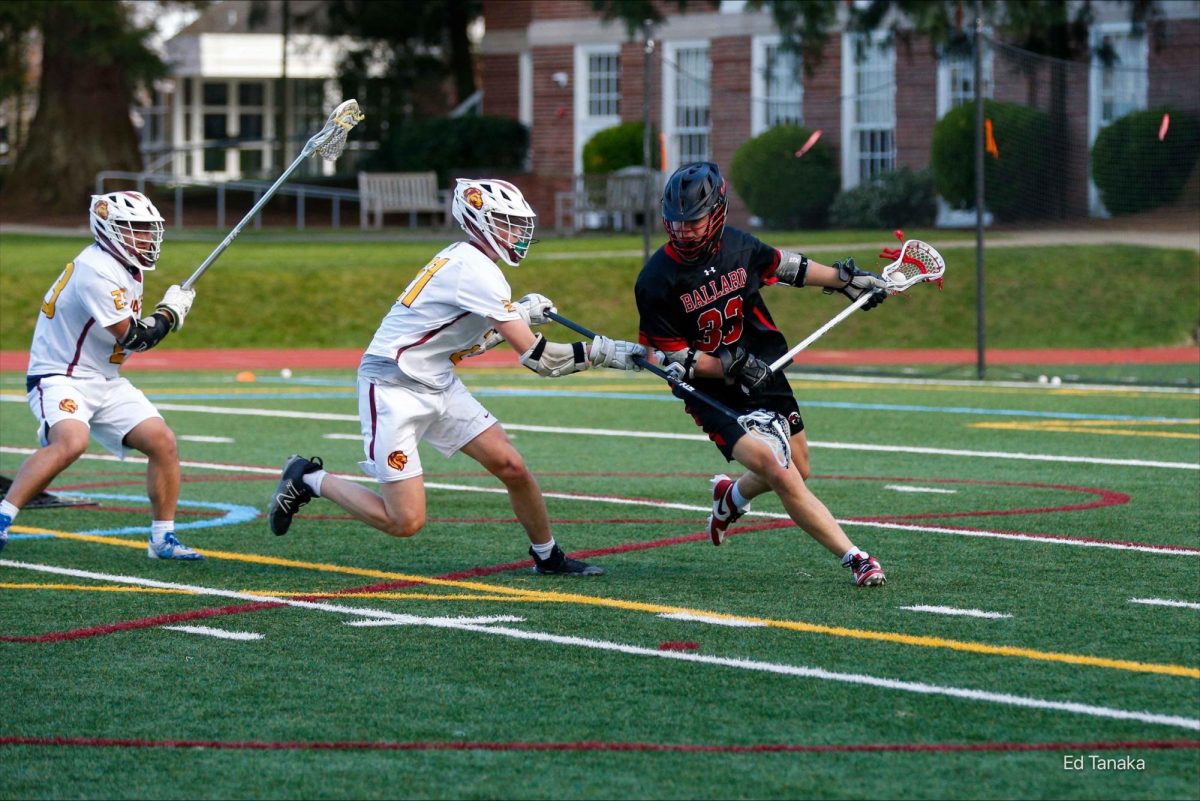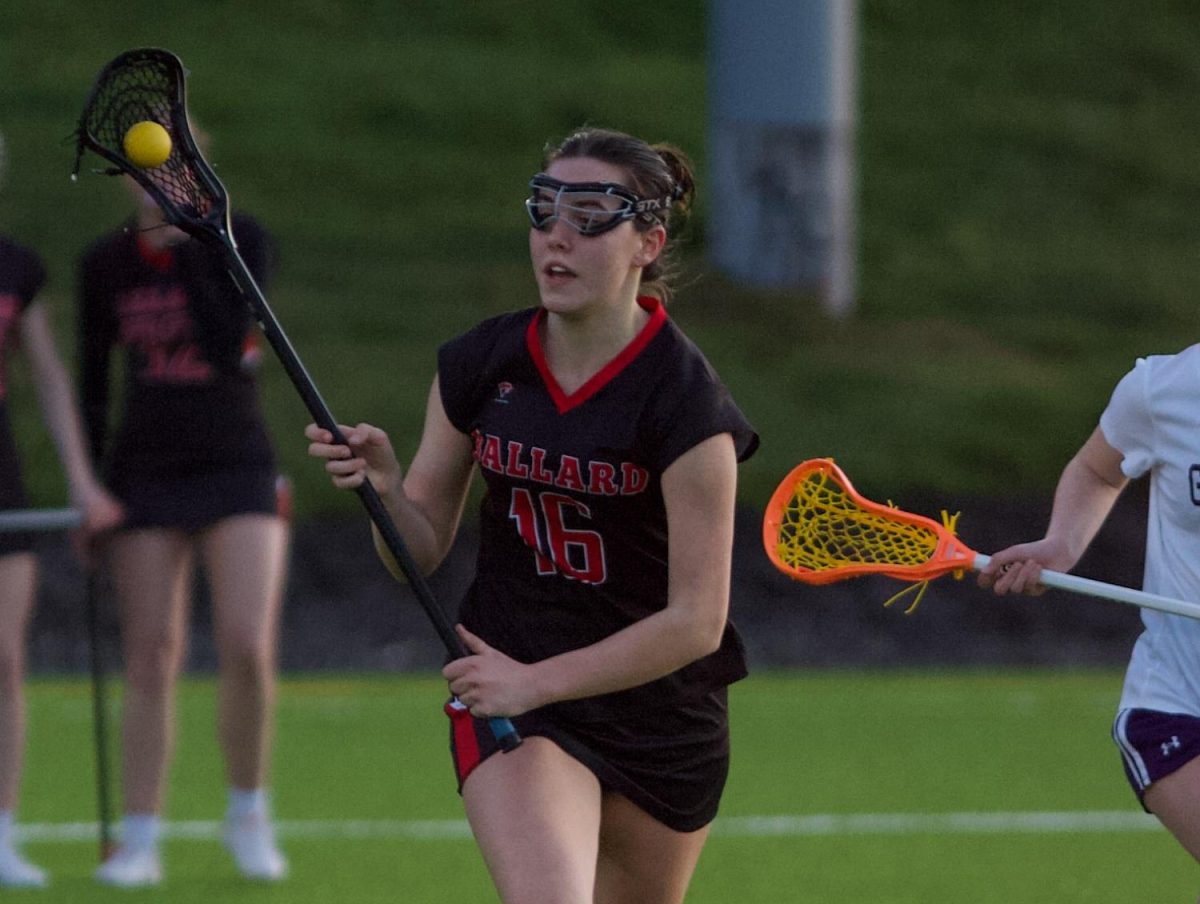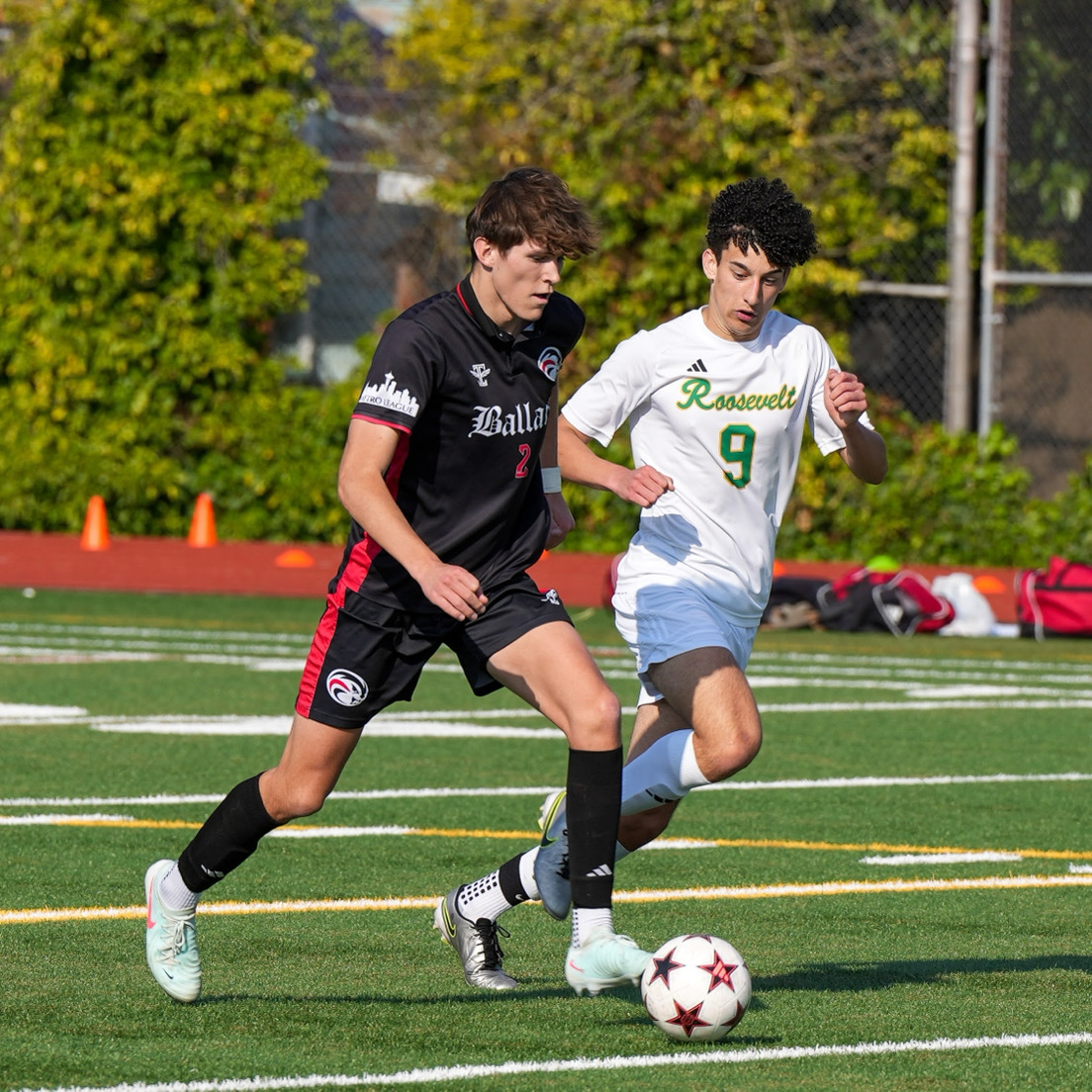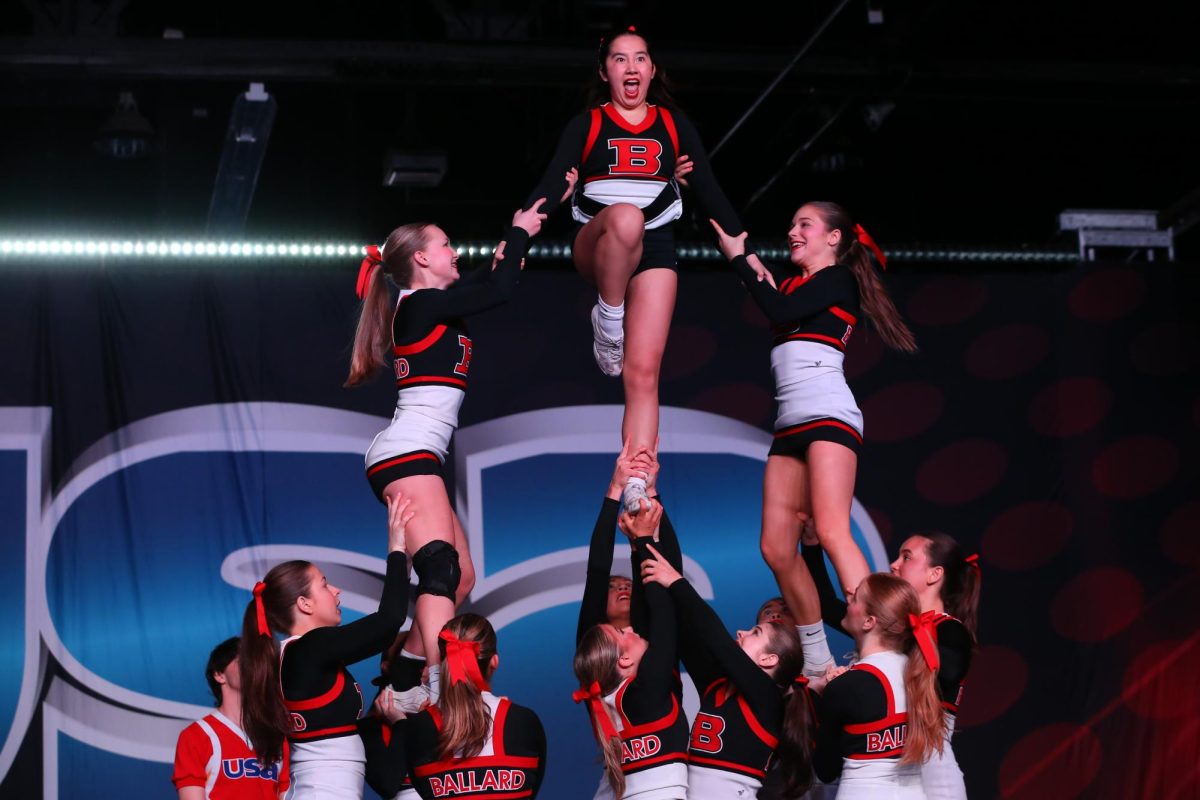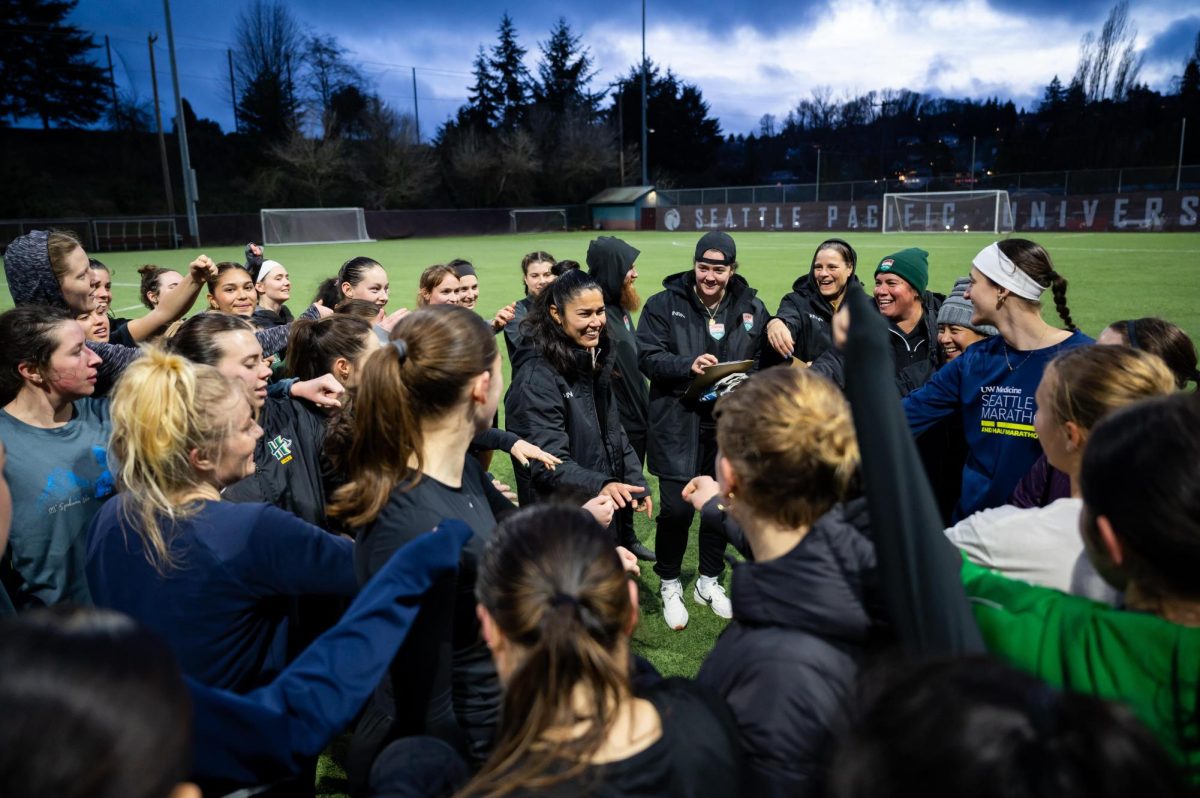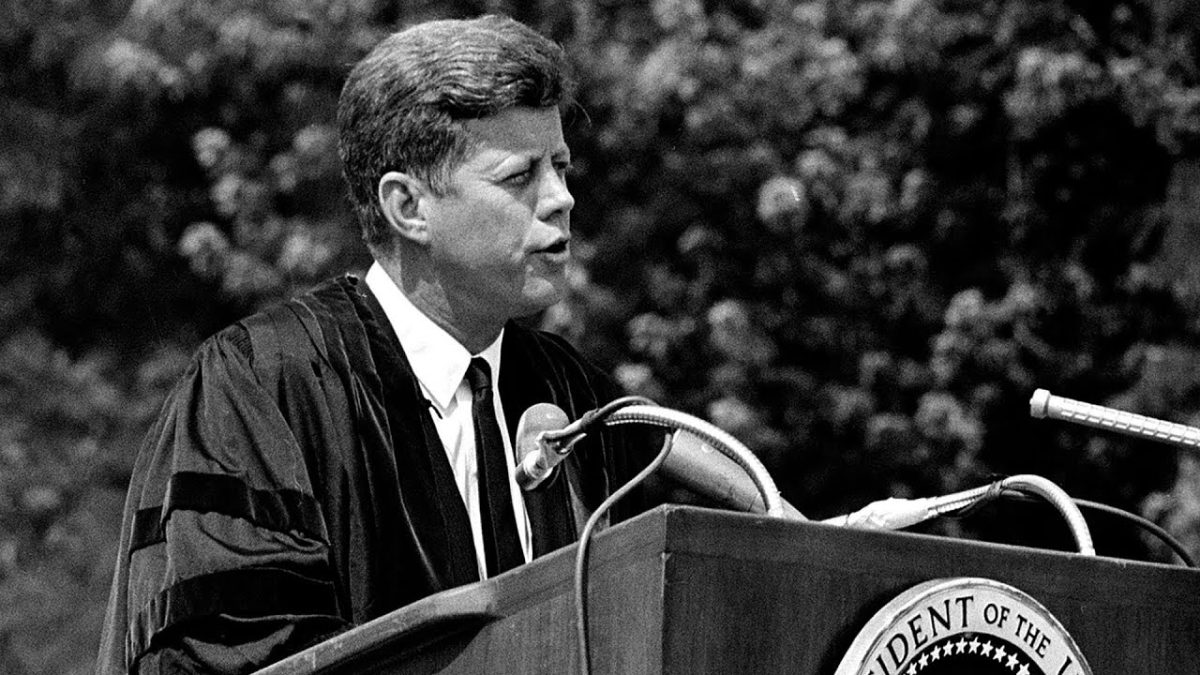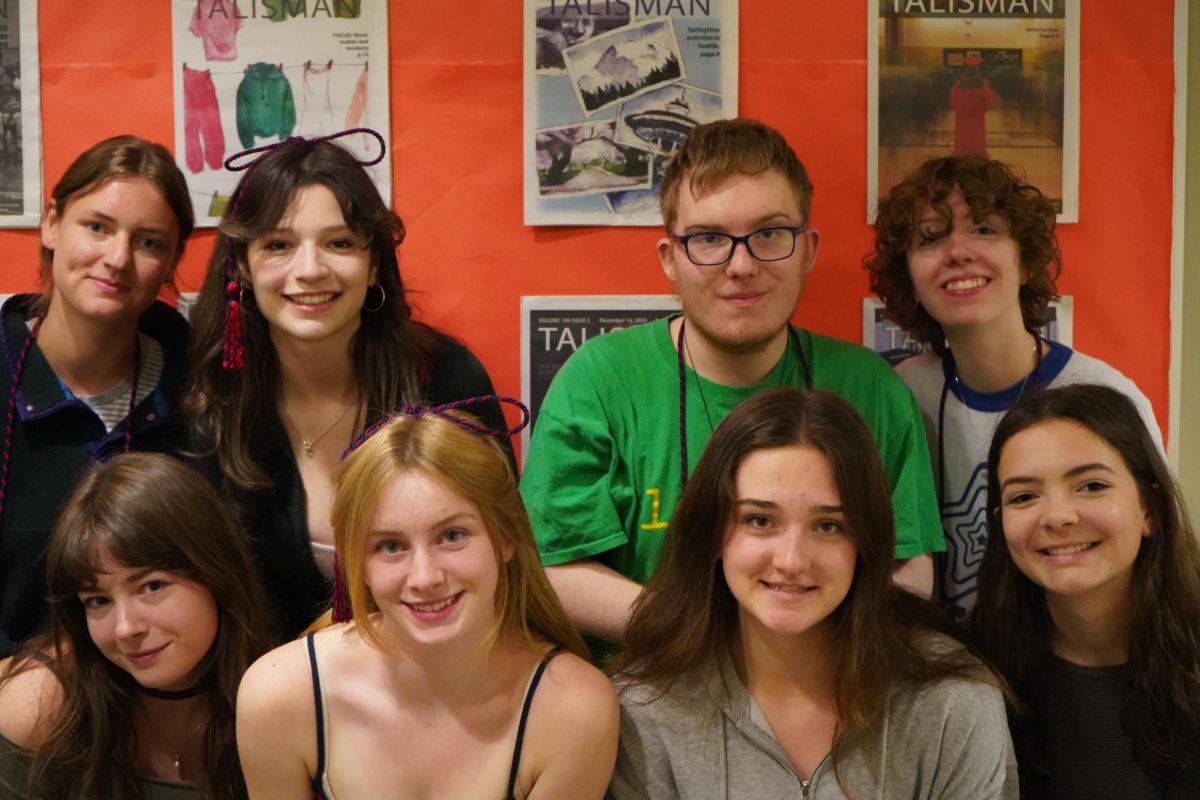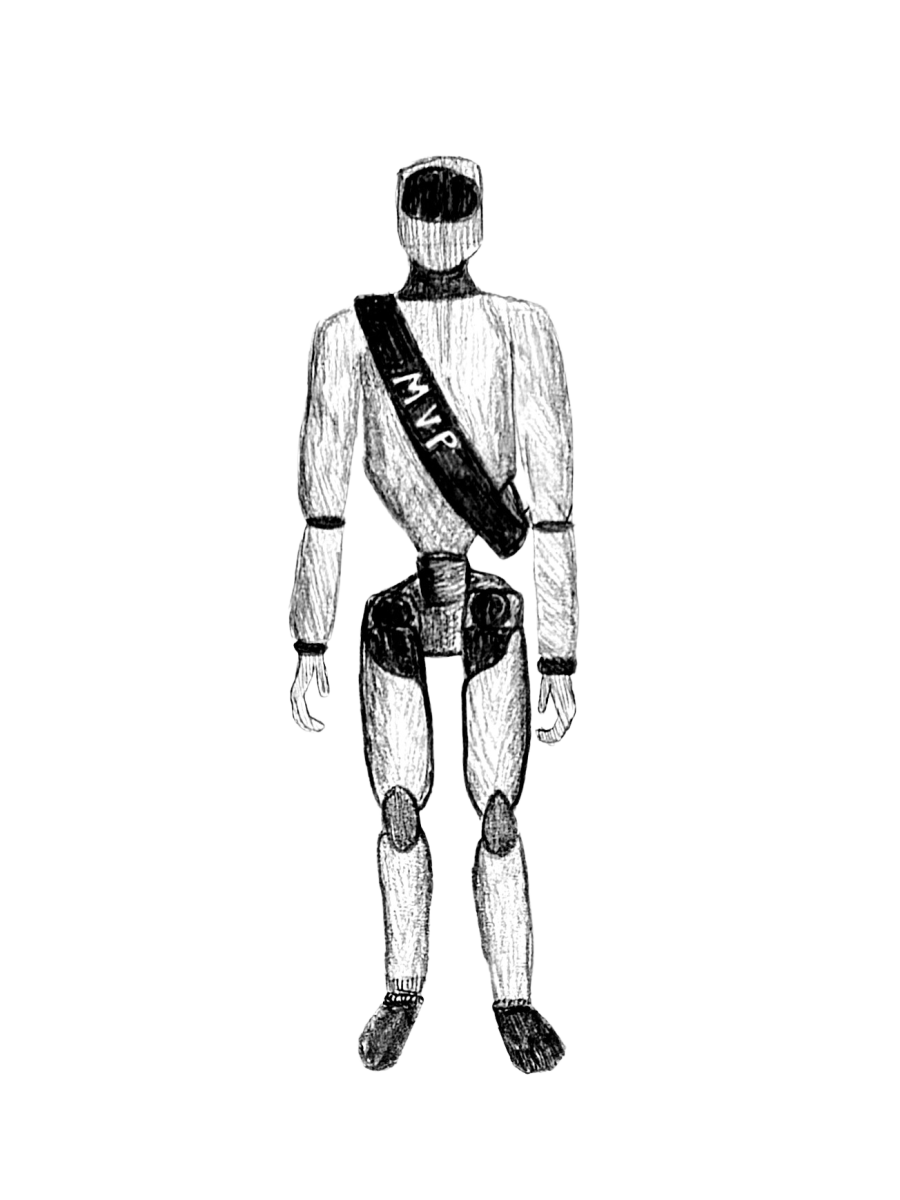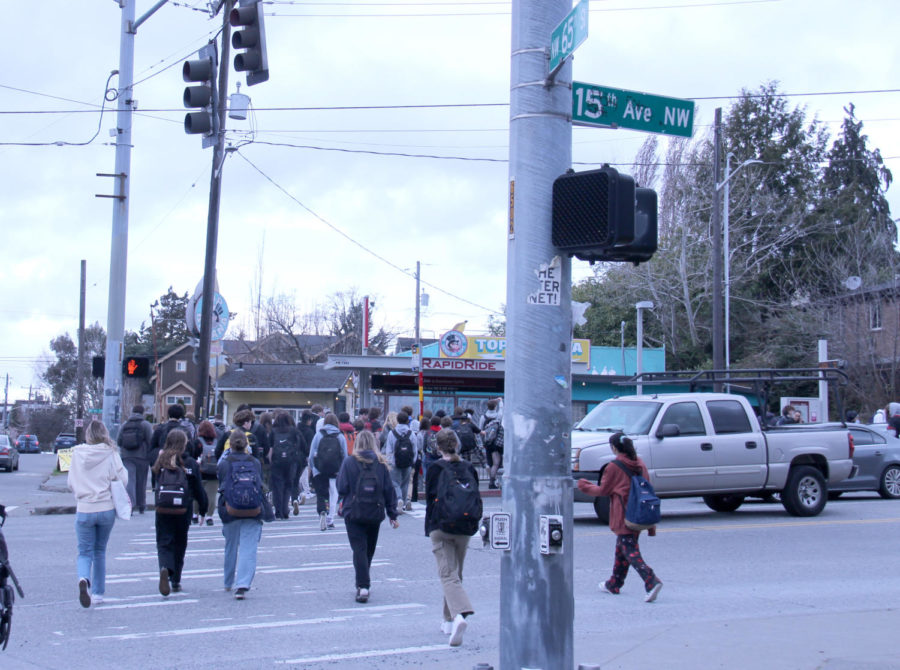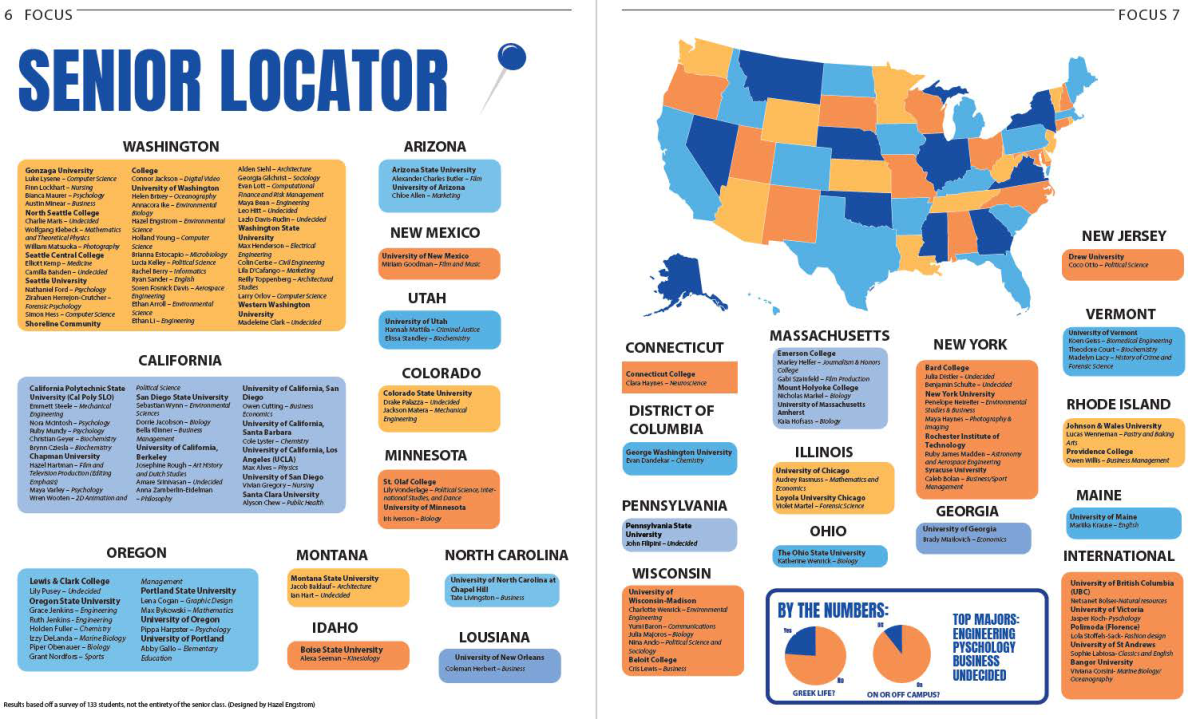Student problems with 15th Avenue
Students cross the street on 15th avenue after school to catch the Metro bus home.
March 16, 2023
The experience is nothing new for students, waiting for the bus while preparing yourself for the already painful experience of riding the D-line and being forced to stand on the small concrete island on 15th Ave NW, arms, elbows, and chests pushing from every angle, precariously hanging off the edge of the narrow curb, face to face with cars going well over the 25 MPH speed limit.
Though the interior of Ballard is focused on ensuring student safety and wellbeing, the street that makes up the school’s western border is a poorly designed death trap, spanning Petco to the Ballard Bridge and beyond. Though urban design may be a side thought for many of us, it has very real repercussions on the lives of anyone who lives, walks and drives in city borders, especially for those that must interact with poor design such as that found on 15th.
The street provides a uniquely horrific experience for pedestrians, anyone who has attempted to have a conversation with someone else while walking down the sidewalk is all too familiar with these flaws. The sidewalks are far too narrow for multiple people, and a small, pitiful parking strip is the only barrier between cars and people. This means blaring noise is an ever-present feature of walking along the road.
The parking strip is a lame excuse for a division, with a few sparse trees strewn about, along with some brown grass to make it feel natural. Even with these additions, the road feels hostile to anyone who is choosing to be there without a motorized vehicle. When walking to the attractions on 15th I do everything in my power to avoid walking on 15th directly, instead choosing to opt for a side street and awkwardly cutting across when I’ve reached my destination, doing this ensures that I won’t be walking in fear of a car driving off the road and hitting me for longer than absolutely necessary.
Aside from the narrow sidewalk and parking strip, the four traffic lanes and a turn alley do nothing to minimize speeding and reckless driving. Few people drive in a manner that maintains the safety of other drivers along with that of pedestrians.
The street not only feels unsafe, it is unsafe, there are numerous stories of fatal car crashes that have happened on 15th along with countless others that have caused injury. A fatality has occurred as recently as November of 2022.
The many side streets that turn onto 15th are largely at fault for the abundance of casualties, with most avenues to get a car onto the street either being an unprotected turn into busy traffic, or an awkward merge that requires impressive levels of telepathy with the cars around you.
The zoning laws behind the design of 15th imply that the space should be pedestrian friendly with the city classifying it as Neighborhood Commercial 2 (NC2). The Seattle Department of Construction and Inspections writes that these spaces should be “Moderately-sized pedestrian-oriented shopping areas that provide a range of goods and services to the surrounding neighborhoods.” When looking at the businesses that remain on 15th, this description is unrecognizable.
Half the storefronts lining the streets are auto shops, a byproduct of the car dependent infrastructure of the area, and the other half are fast food chains (think Taco Bell, Wendy’s, Five Guys, etc.) Occasionally we see small businesses pop up, but they constantly close and reopen under a different name due to being inaccessible to people in cars and they have become rare among the sea of corporate drive through services.
These features make the street unpleasant to spend time on, no one says “Hey lets go hangout and walk down 15th this weekend!” The thought is nauseating.
Though I am not a fan of what 15th has become, I am optimistic about its potential. I can see it turning into an Aurora adjacent hellscape, but it could also move in the direction of something like Market Street, with more stop signs and crosswalks, functional public transit and smaller, more inviting storefronts.
Our city has become overrun with streets resembling car oriented suburban shopping streets, but the charm of Seattle still remains throughout the city. Ballard has a rich history as a nordic fishing port, and parts of that history are still visible in the neighborhood’s design, with the locks, and the sect of the neighborhood surrounding them resembling a pedestrian friendly space which is a destination for students, tourists and local residents alike.
Unfortunately, the neighborhood’s original charm has been stripped from 15th, making our school’s location loud and inconvenient at best and dangerous at worst.
I am not an expert on urban planning, I have never taken a class on it, and I have zero experience with creating zoning laws and designing streets. However I have lived in a city for 18 years, and I can confidently say that certain designs evoke feelings of joy and others evoke feelings of dread. Walking out of school at the end of a long day should not be a reminder of how our street prioritizes the efficiency of cars over our safety and wellbeing.

